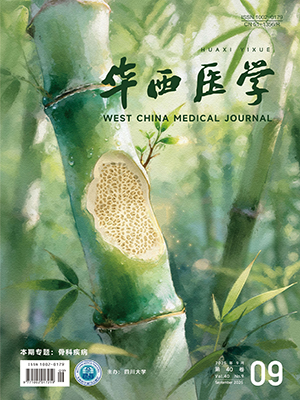| 1. |
四川省发展和改革委员会, 四川省卫生和计划生育委员会, 四川省人力资源和社会保障厅, 等. 关于印发《四川省省管公立医院取消药品加成医疗服务价格补偿调整方案》的通知(川发改价格〔2016〕582 号). (2016-12-13)[2020-01-03]. http://wsjkw.sc.gov.cn/scwsjkw/zcwj11/2016/12/20/922a428857ab4b8a82c6ae592fb14fab.shtml.
|
| 2. |
四川省发展和改革委员会, 四川省卫生和计划生育委员会, 四川省人力资源和社会保障厅, 等. 关于推进省管公立医院医疗服务项目价格结构性调整的通知(川发改价格〔2017〕627 号). (2017-12-13)[2020-01-03]. https://www.sc.gov.cn/10462/11857/13305/13312/2017/12/27/10441765.shtml.
|
| 3. |
李晓彤. 基于中断时间序列抗菌药物管理措施在基层医疗机构实施效果评价. 武汉: 华中科技大学, 2019.
|
| 4. |
张晗希, 韩孟杰, 周郁, 等. 应用中断时间序列分析我国“四免一关怀”政策实施前后对艾滋病相关病死率的影响. 中华流行病学杂志, 2020, 41(3): 406-411.
|
| 5. |
张华, 陶立元, 赵一鸣. 中断时间序列的基本理论及应用. 中华儿科杂志, 2019, 57(7): 531.
|
| 6. |
国家卫生计生委, 国家发展改革委, 财政部, 等. 关于印发控制公立医院医疗费用不合理增长的若干意见的通知(国卫体改发〔2015〕89 号). (2015-10-27)[2020-01-03]. http://www.scio.gov.cn/32344/32345/33969/34689/xgzc34695/Document/1480556/1480556.htm.
|
| 7. |
刘建楠, 周典. 城市公立医院综合改革前后住院费用比较分析—以安徽省某三甲医院为例. 中国医院管理, 2016, 36(7): 23-25.
|
| 8. |
崔壮, 李长平, 魏凤江, 等. 参保住院患者医疗耗材费用及影响因素分析. 中国公共卫生, 2010, 26(10): 1313-1314.
|
| 9. |
李孜, 刘宪, 袁笛. “价值医疗”视角下重庆医疗服务项目价格调整的成效与思考. 中国医疗保险, 2021(9): 48-54.
|
| 10. |
谭爱忠, 姚奕婷, 邹俐爱. 医疗服务价格管理区域协调机制相关问题探讨. 中国卫生经济, 2018, 37(4): 46-49.
|
| 11. |
王海银, 金春林, 姜庆五. 医疗服务价格动态调整机制构建及发展建议. 中国卫生资源, 2018, 21(6): 482-486.
|
| 12. |
王煜昊, 徐伟, 路娜娜, 等. “4+7”集中带量采购实施效果分析—基于 9 试点地区药品销售数据. 中国卫生政策研究, 2021, 14(2): 36-43.
|
| 13. |
黄素芹, 田侃, 张乐君, 等. 带量采购政策对我国药品价格影响研究. 价格理论与实践, 2019(5): 35-38.
|
| 14. |
隋东明. 公立医院住院患者医用卫生材料使用和监管对策研究—以 Y 医院为例. 长春: 吉林大学, 2016.
|




